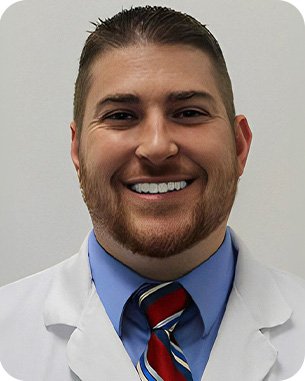Achieving aesthetic excellence in dental implant restorations involves more than just placing implants in the right position and choosing the right materials. It requires a comprehensive understanding of the surrounding soft tissues, as the appearance of the gums around an implant is critical to the overall success of the restoration. Aesthetic implant outcomes are largely determined by how well the soft tissues are managed before, during, and after implant placement.
In this article, we’ll delve into the essential role of soft tissue management in ensuring aesthetic implant success, focusing on strategies to optimize gingival health, create natural contours, and prevent common complications. As a trained dentist, understanding the intricate relationship between soft tissue and implant restorations is key to achieving the best possible outcomes for your patients.
1. The Importance of Soft Tissue in Implant Esthetics
Soft tissue around dental implants plays a pivotal role in determining the overall aesthetic outcome of implant restorations. Healthy, well-managed gingiva is essential not only for supporting the final prosthetic but also for creating a natural-looking interface between the implant and the surrounding tissues.
Why Soft Tissue Matters in Implant Esthetics:
- Gingival Contours Influence Aesthetics: The contours of the gingiva surrounding the implant will shape the emergence profile of the restoration. If the soft tissues are not managed properly, the result can be an unnatural, bulky, or poorly contoured gingival margin, which negatively impacts the final appearance.
- Gum Recession and the ‘Black Triangle’ Phenomenon: One of the most common complications when soft tissues are not properly managed is gum recession, particularly in the anterior region. Gum recession around an implant can result in visible gaps or black triangles between the implant and adjacent teeth, which are aesthetically unpleasing. This highlights the importance of soft tissue management to prevent recession and maintain proper tissue architecture.
- Soft Tissue as a Barrier to Infection: The gingival tissue around the implant also serves as a biological seal that helps protect the underlying bone and implant from infection. Poor soft tissue health can increase the risk of peri-implantitis and other complications that jeopardize the success of the implant, affecting both function and aesthetics.
In essence, the relationship between the soft tissues and the implant is a dynamic one. Implants that are placed in harmony with the gingiva, and those surrounded by well-contoured, healthy tissue, have a much better chance of achieving long-term aesthetic success.
2. Soft Tissue Biotype and Its Impact on Implant Esthetics
When discussing soft tissue management, one of the first factors to consider is the patient’s gingival biotype. The gingival biotype refers to the thickness and morphology of the soft tissue around the teeth and implants. There are generally two categories of gingival biotypes:
- Thick Biotype: Characterized by broad, dense tissue, a thick biotype is more stable and less prone to recession. This type of tissue provides better support for implant restorations and helps maintain the contour of the gingiva over time.
- Thin Biotype: Thin tissue is delicate and more prone to recession, especially in high-stress areas, such as the maxillary anterior region. Thin biotype patients are more likely to experience soft tissue loss around implants, which can result in compromised aesthetics and an increased risk of complications.
Managing the Thin Biotype:
Patients with a thin biotype are more challenging from an aesthetic perspective, as they have a higher risk of soft tissue recession and visibility of the implant fixture or abutment. However, with proper management, predictable results can be achieved. Here are a few key strategies:
- Soft Tissue Augmentation: In cases of thin biotype, soft tissue grafting can be used to increase the volume and thickness of the gingiva. This can be done at the time of implant placement or later during the healing phase to improve both the aesthetics and the health of the soft tissue around the implant.
- Using Zirconia Abutments: Zirconia abutments are particularly effective in patients with thin biotypes. These abutments are more translucent than titanium and mimic the appearance of natural teeth, reducing the chances of a “grey” or unnatural appearance when the gingiva is thin.
- Temporary Abutments: Using temporary abutments during the healing phase allows you to shape the gingiva to the desired contour before finalizing the restoration. These abutments can provide gentle pressure to encourage tissue growth and create a more natural emergence profile.
Thick Biotype Benefits:
While a thick biotype tends to be more stable and less prone to recession, it is important to manage the tissue carefully to avoid excessive bulging around the implant, which can negatively affect the final esthetic result. Proper abutment design and careful contouring of the surrounding tissue are key in thick biotype cases.
3. Techniques for Soft Tissue Management in Implant Dentistry
Managing soft tissues effectively during implant treatment requires careful planning and execution. There are several key techniques and strategies that can be employed before, during, and after implant placement to ensure optimal soft tissue health and aesthetics.
Pre-Surgical Soft Tissue Management:
Tissue Conditioning: If the patient has compromised or irregular soft tissues, it may be necessary to condition the gingiva before surgery. This can be done by using provisional restorations or orthodontic appliances to move the gingiva into a more ideal position, allowing for better tissue adaptation and future restoration success.
Bone Grafting and Soft Tissue Grafting: In cases where there is insufficient bone or soft tissue, bone grafting or soft tissue grafting may be required before implant placement. These procedures are often necessary in patients with severe resorption or thin biotypes to restore both hard and soft tissue volumes.
Surgical Soft Tissue Management:
Flap Design and Tissue Handling: During implant surgery, the flap design is critical. A flapless technique may be used in some cases to avoid disturbing the delicate soft tissue, especially in the esthetic zone. When a flap is raised, the clinician should minimize trauma to the surrounding tissues to ensure optimal healing and preservation of the gingiva.
The Role of Temporary Restorations: After implant placement, temporary restorations play a critical role in shaping the gingiva. A provisional crown or bridge can be used to influence the gingival contour and support the tissue during the healing phase. The temporary restoration should be shaped to provide proper emergence profile and create natural tissue contours.

Get full access to this article, many others published weekly, and a library of exclusive resources by becoming an ADI MEMBER today. Stay informed, expand your knowledge, and connect with leading professionals in dentistry.
Already a member? Login Now













